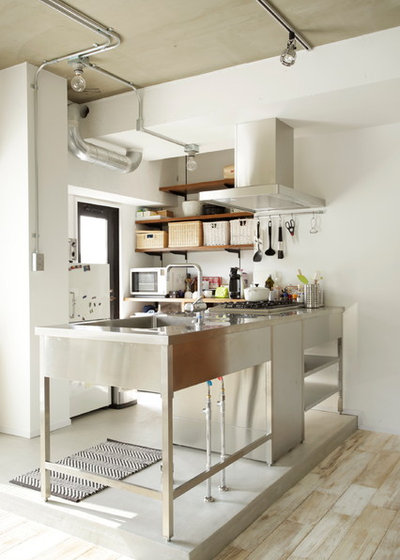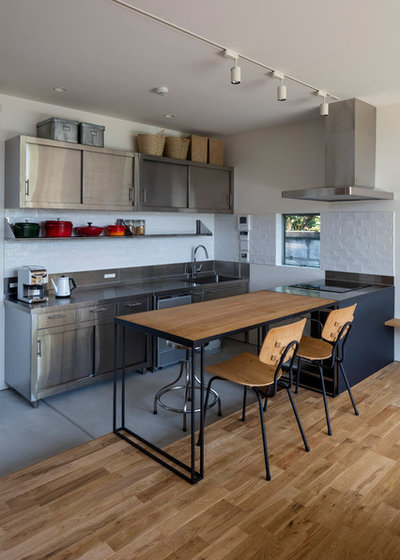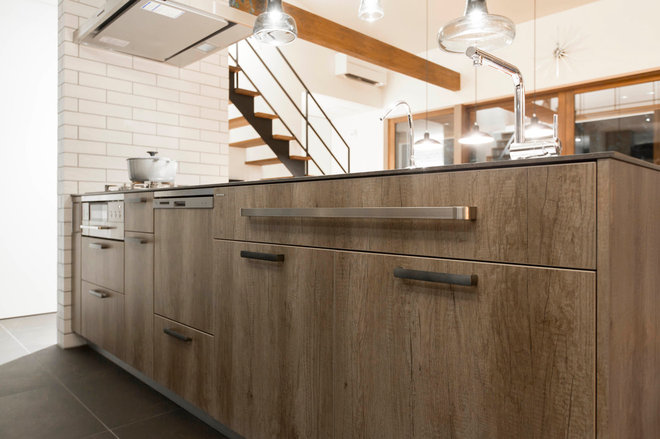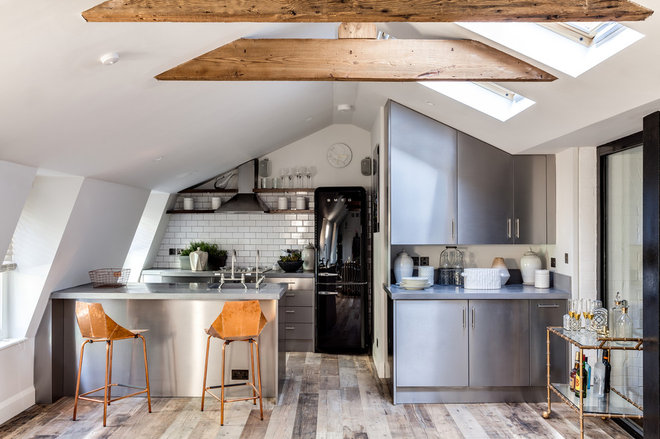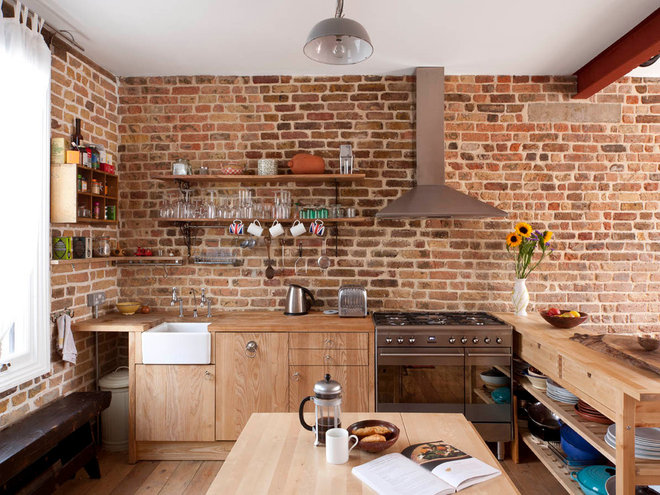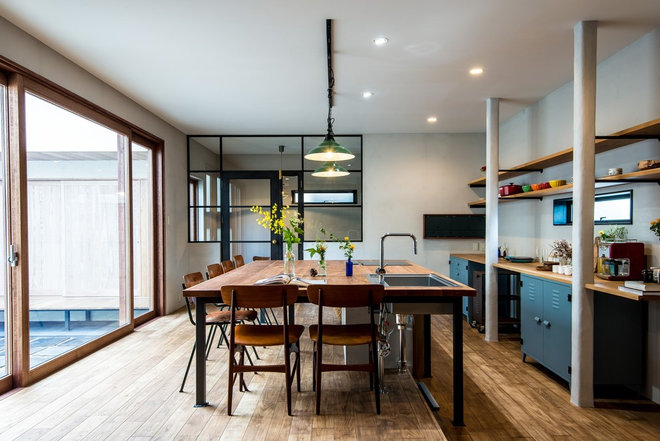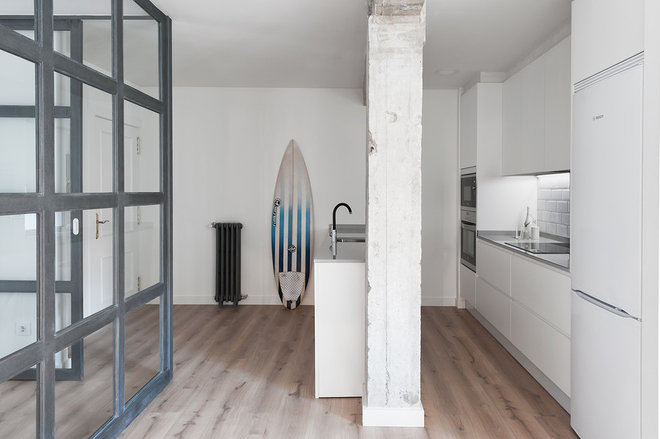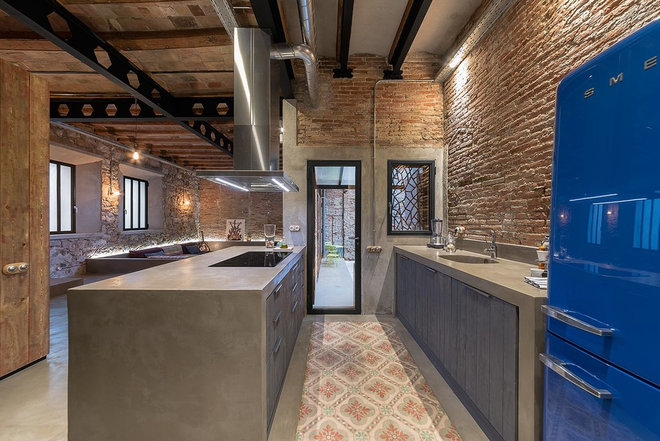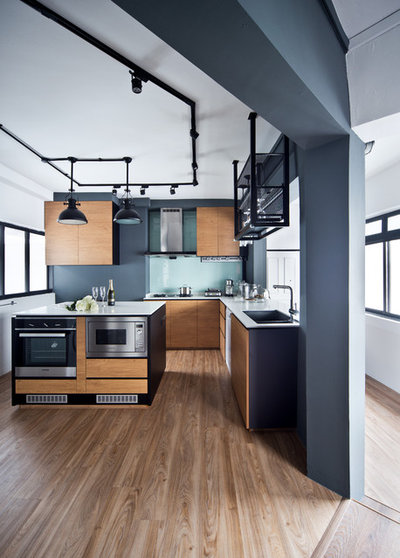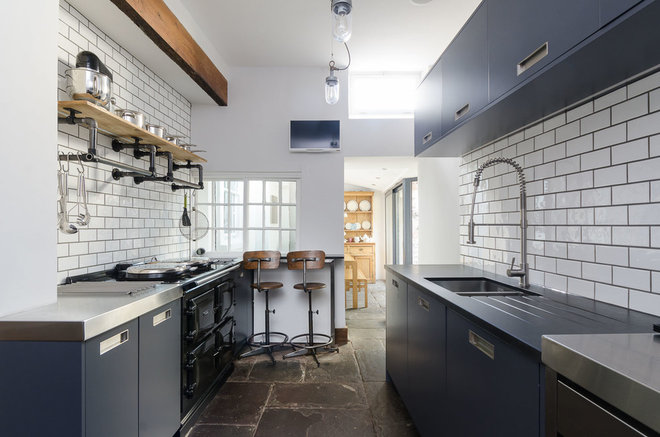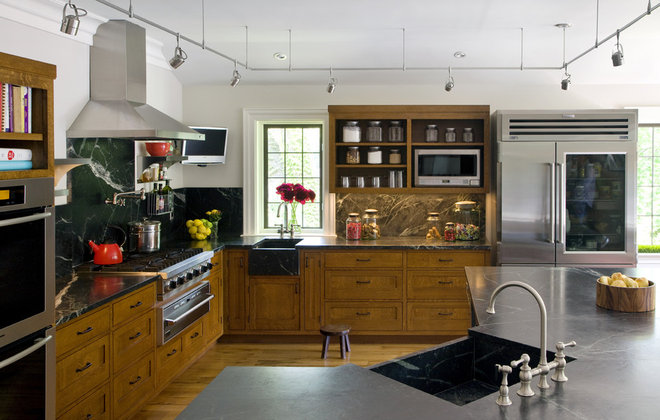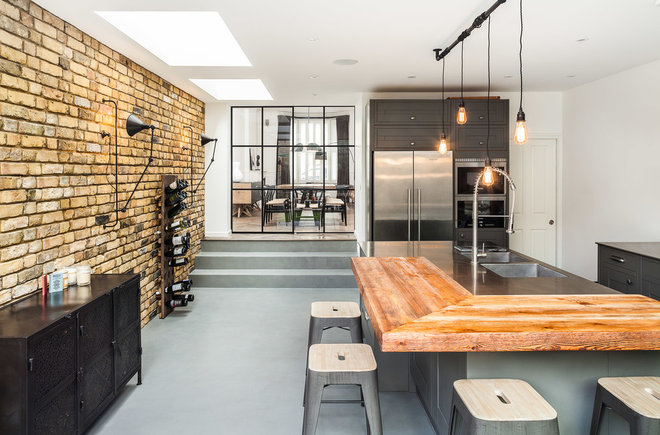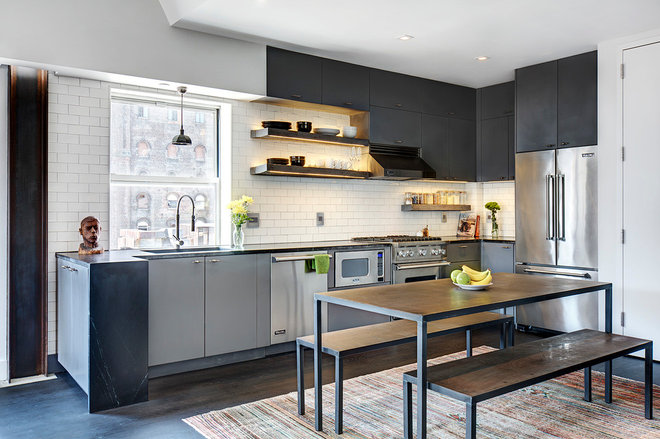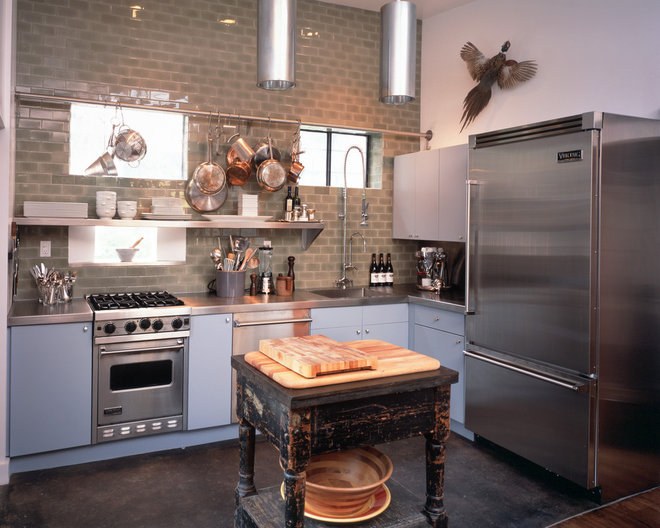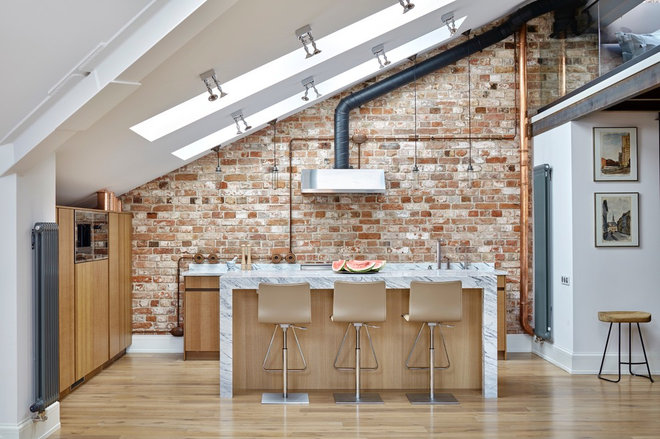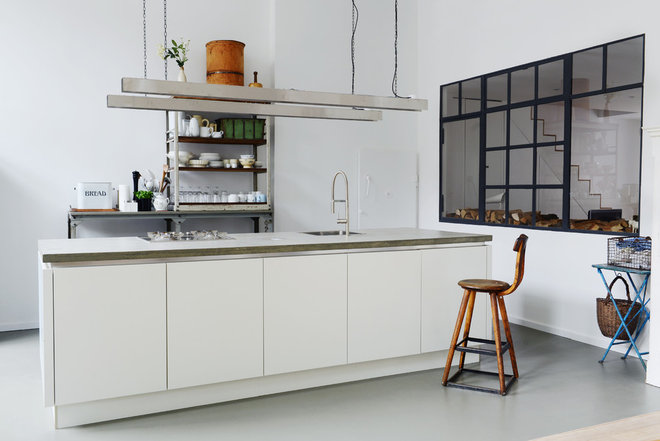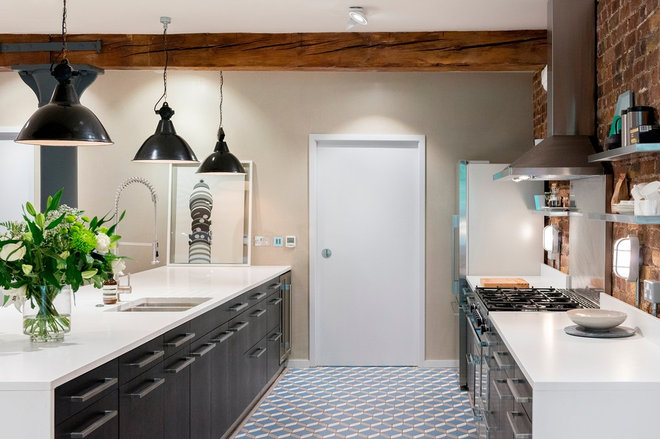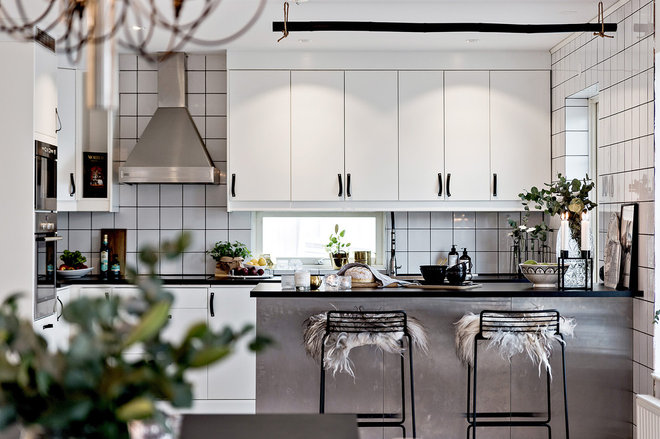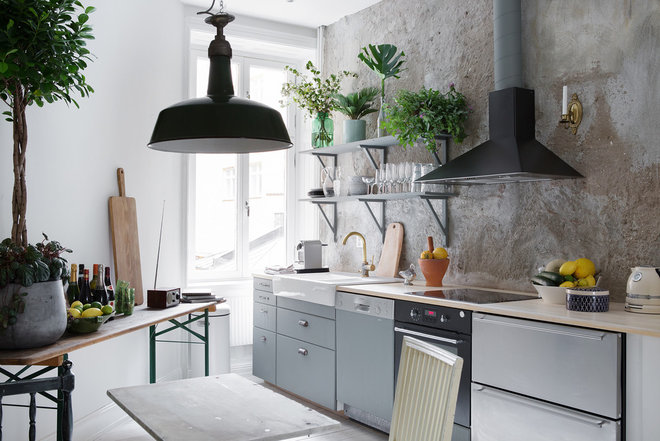The industrial kitchen: It’s a sought-after look full of tough materials that’s not always easy to pull off without going overboard. Whether you’re looking to get just a taste of industrial style with some shiny metal accents and piping or go all-in with durable stainless steel cabinets and countertops, read on to understand the key ingredients of this look, how to incorporate them and how to keep the restaurant-ready style feeling like home.
Metals
One of the hallmarks of industrial kitchen style is the use of metals, either cool stainless steel or warmer metals like copper, bronze and brass. These materials look unfussy and fit for a professional chef, putting the focus on cooking rather than on ornate decoration, but in a way that has a visual appeal all its own.
Stainless steel isn’t only for appliances. It can be a great material for countertops and even cabinets. Just keep in mind that metal surfaces, while crisp and perfect when installed, eventually get dinged and scratched with heavy use. In my view, this adds a patina that becomes part of the industrial appeal, but you have to be ready to accept it.
Natural Elements
Unfussy materials like wood and brick are also essential ingredients to industrial kitchen style. Underdressed, natural tones make for the best industrial look, so search out grainy woods and eclectic brick hues (rather than uniform “perfect” red). Where possible, embrace the beautiful flaws in materials, such as the obvious patches in the brick seen here.
Mixing wood tones gives casual elegance to an industrial kitchen, so don’t be afraid to combine woods in contrasting undertones (like these ruddy chairs versus the yellowish floor).
Notice that these spaces tend to let the contrasting natural tones provide the bulk of the color, so the palette feels varied but not out of control.
Concrete
Another go-to material option for industrial kitchens is concrete. Few materials appear more no-nonsense while still giving subtle textural richness. Exposed structural columns make a definite statement.
Concrete also makes gorgeous countertops, especially in a waterfall style, as shown here. Concrete counters tend to need occasional resealing to stay in good condition, but the look is worth the effort.
Instead of using actual concrete in your industrial kitchen, you can echo that vibe with neutral or warm gray paint.
To pick a gray without too strong of an undertone, compare samples to a larger gray or black piece to see if contrasting tones appear — many grays suddenly look very blue or purple when applied at a larger scale, and come off as more glamorous than industrial as a result. You can purchase small tester cans from many paint companies to then apply a small amount to the wall before committing.
Want a quick way to get a touch of industrial appeal? Switch out your faucet for a restaurant-style model with an exposed coil and a high-arching neck. These dramatic-looking faucets are highly functional for serious cooks.
Track Lights
Track lighting got a terrible reputation around the turn of the millennium, with many bad ’90s fixtures being pulled down or looked at with scorn. Forget the S-shaped tracks of days past and the MR-15 bulbs that shine odd colors out the back. Modern options carry simple, crisp lights and user-friendly spotlighting to help illuminate kitchen tasks.
Dine-In and Vintage Islands
Instead of a typical cabinet-based island, a table gives you an extra prep space when you need it and a dining spot right in the center of the action.
Mixing chairs like this provides even more eclectic appeal. Try browsing antiques and vintage markets for inexpensive single chairs that you can collect over time.
For a cleaner, less eclectic option, try a dining table island paired with bench seats. A backless bench can tuck out of the way when you’re cooking, then pull out when dinner hits the table.
This look is a little crisper than the last, but it still has an industrial twist, especially with metal edging details on the table and bench.
Speaking of special islands, a vintage cart or table gives great contrast from your main counters, and you can take it with you if you move.
No Uppers
Skipping upper cabinets is popular for industrial-style kitchens, especially when you have a pretty wall that you don’t want to cover.
Clutter Control
To keep an industrial kitchen looking “designed” and not haphazard, it’s even more important to purge clutter.
Get rid of gadgets and cookware you don’t actually use, put products from unattractive packages into simple jars or bins, and generally try to eliminate any pieces without an aspect of beauty. Everything on display should be worth showing off.
Warming Up
After stripping back so many comforts of contemporary home decor, you may worry that your industrial kitchen feels a little too serious and unwelcoming. One way to warm it up is to add textural elements like faux sheepskin throws and other fuzzy materials.
Drape a little sheepskin over a minimalist metal stool, and you have a warm Scandinavian style statement.
Plants
Don’t forget while adding so many hard, heavy materials to also harness the power of plants. As a finishing touch, a few plants like herbs or even an indoor tree bring life to an industrial kitchen.
If you don’t have a green thumb, some inexpensive blossoms in bud vases go a long way to softening the edges of your design.


